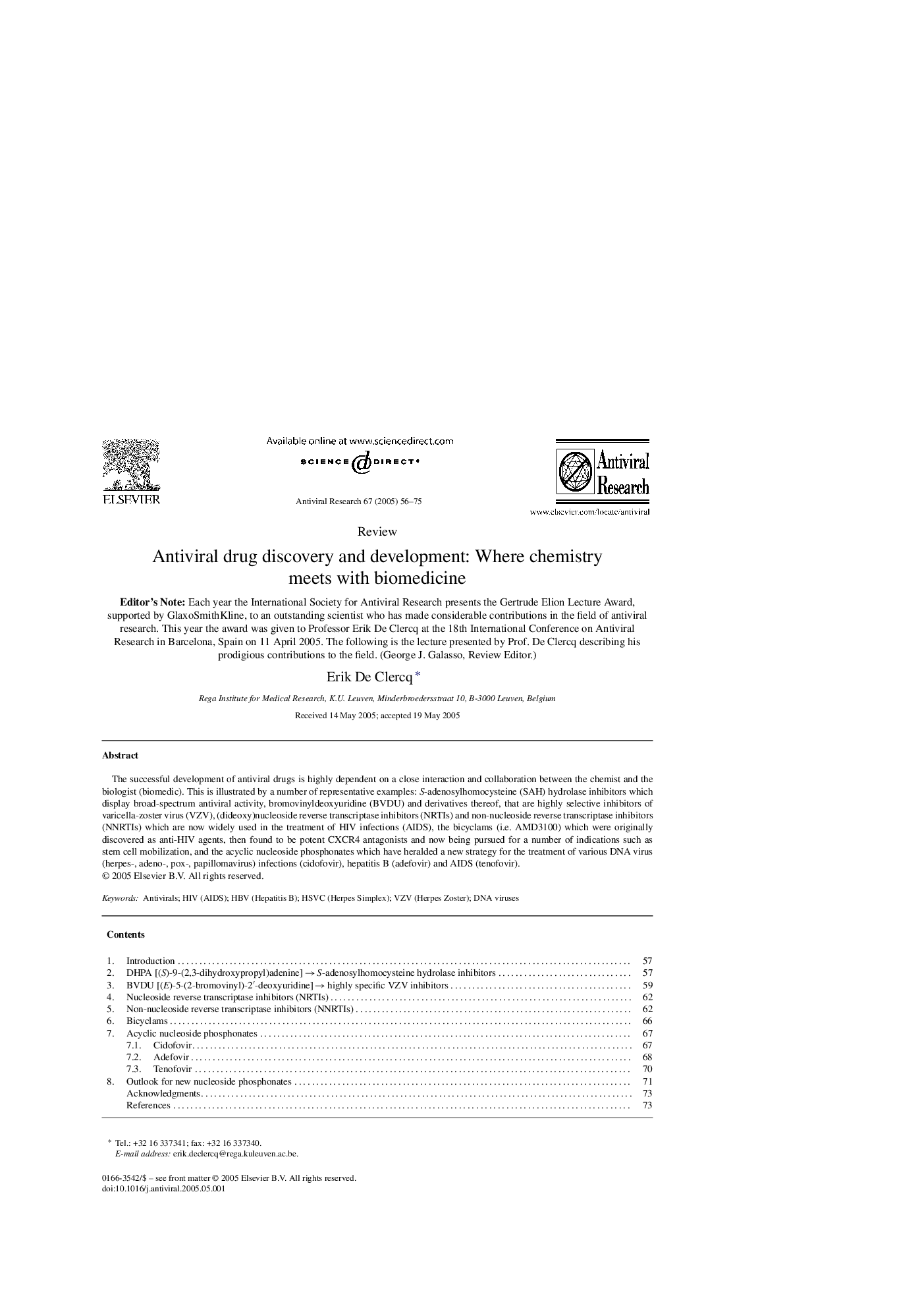| Article ID | Journal | Published Year | Pages | File Type |
|---|---|---|---|---|
| 9000909 | Antiviral Research | 2005 | 20 Pages |
Abstract
The successful development of antiviral drugs is highly dependent on a close interaction and collaboration between the chemist and the biologist (biomedic). This is illustrated by a number of representative examples: S-adenosylhomocysteine (SAH) hydrolase inhibitors which display broad-spectrum antiviral activity, bromovinyldeoxyuridine (BVDU) and derivatives thereof, that are highly selective inhibitors of varicella-zoster virus (VZV), (dideoxy)nucleoside reverse transcriptase inhibitors (NRTIs) and non-nucleoside reverse transcriptase inhibitors (NNRTIs) which are now widely used in the treatment of HIV infections (AIDS), the bicyclams (i.e. AMD3100) which were originally discovered as anti-HIV agents, then found to be potent CXCR4 antagonists and now being pursued for a number of indications such as stem cell mobilization, and the acyclic nucleoside phosphonates which have heralded a new strategy for the treatment of various DNA virus (herpes-, adeno-, pox-, papillomavirus) infections (cidofovir), hepatitis B (adefovir) and AIDS (tenofovir).
Keywords
Related Topics
Life Sciences
Immunology and Microbiology
Virology
Authors
Erik De Clercq,
